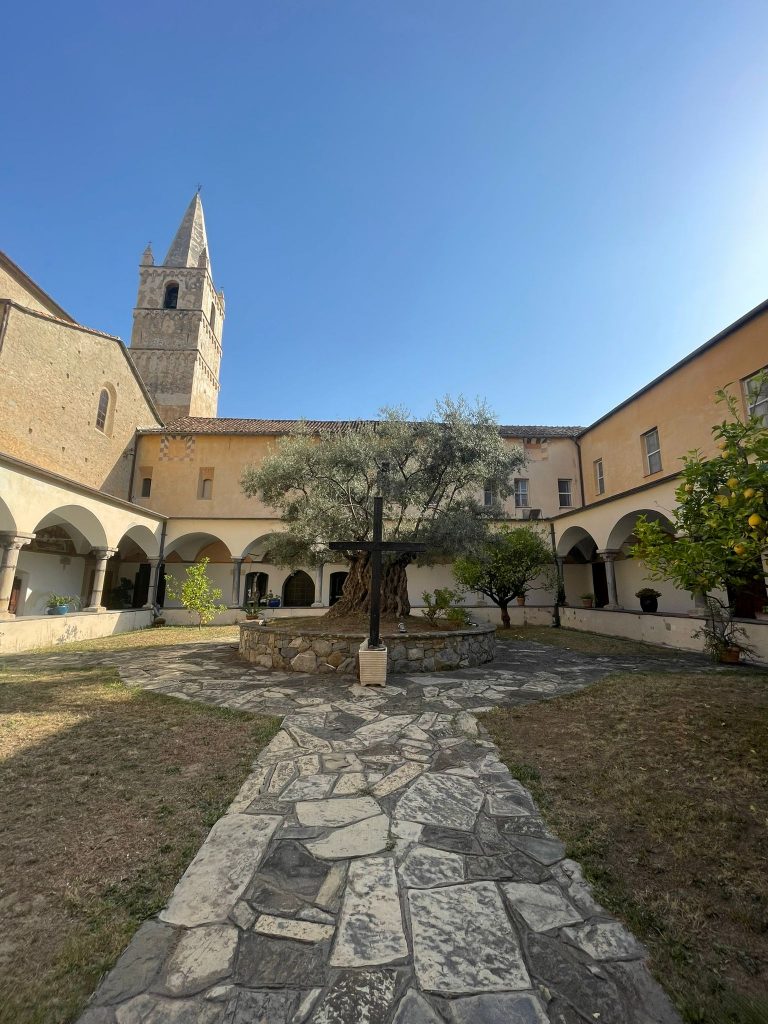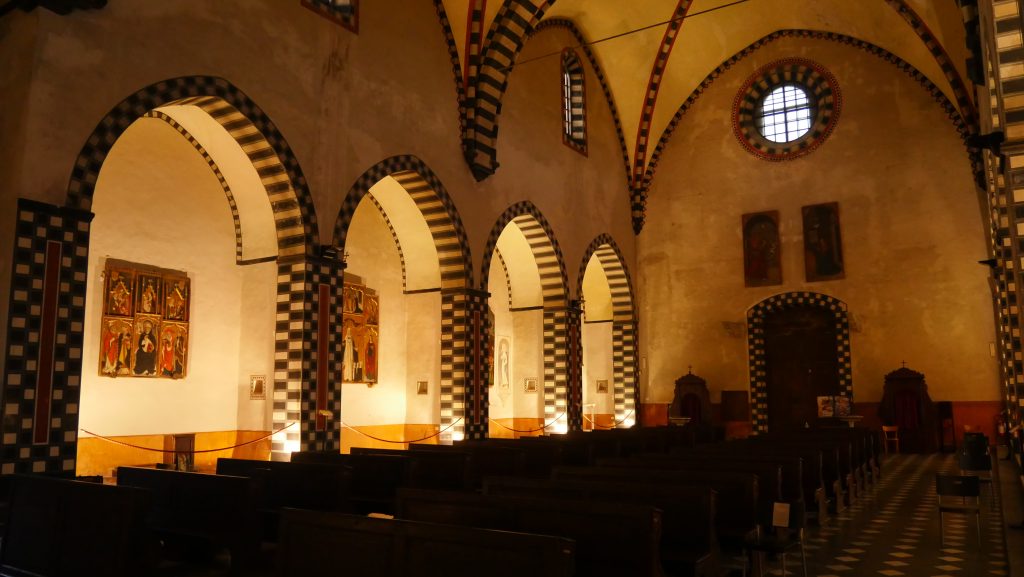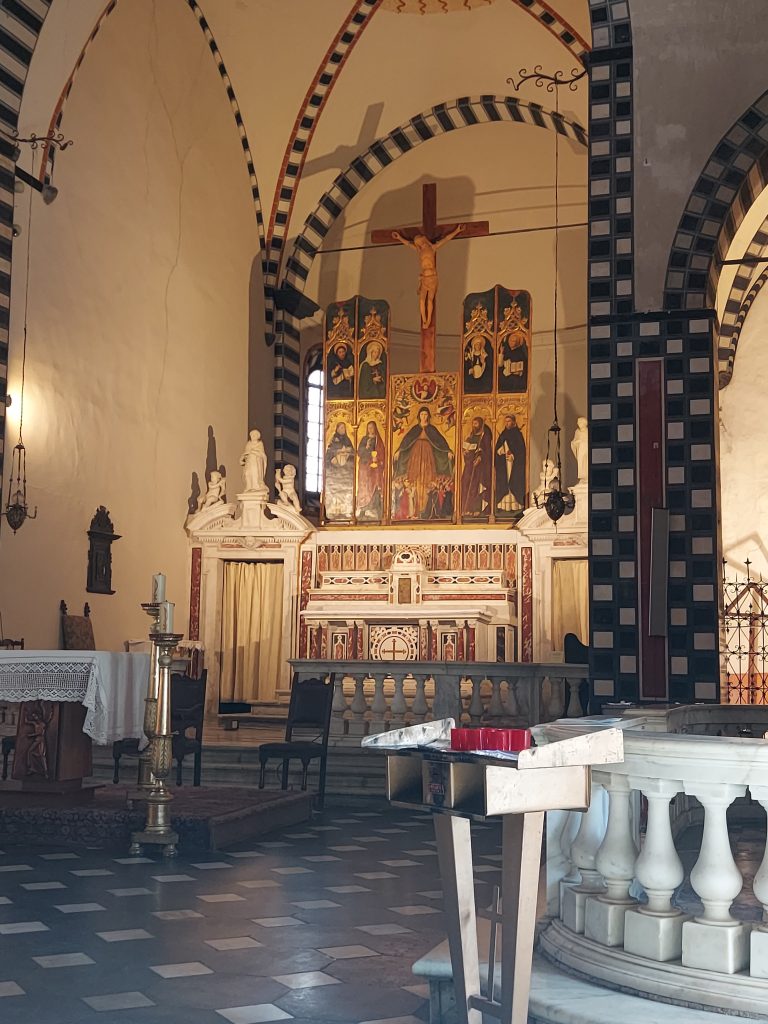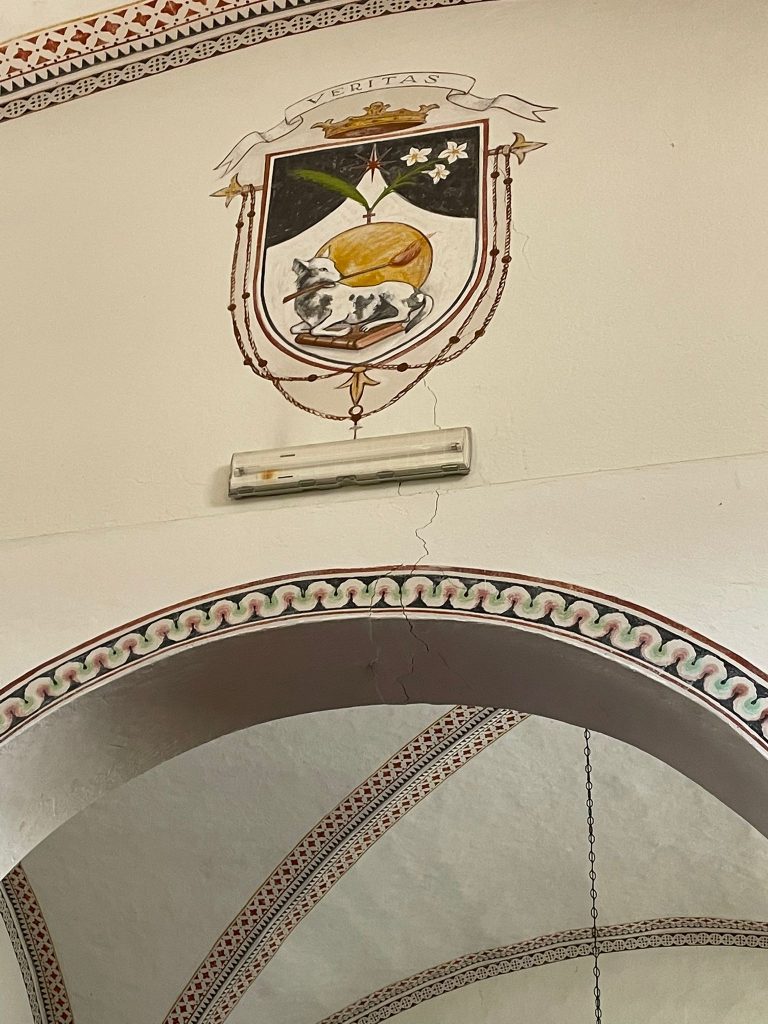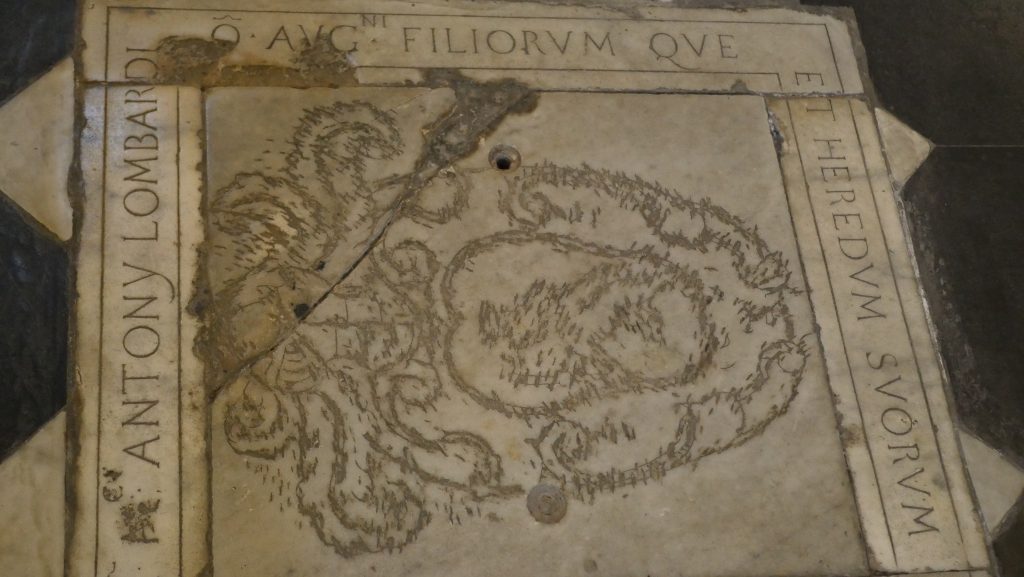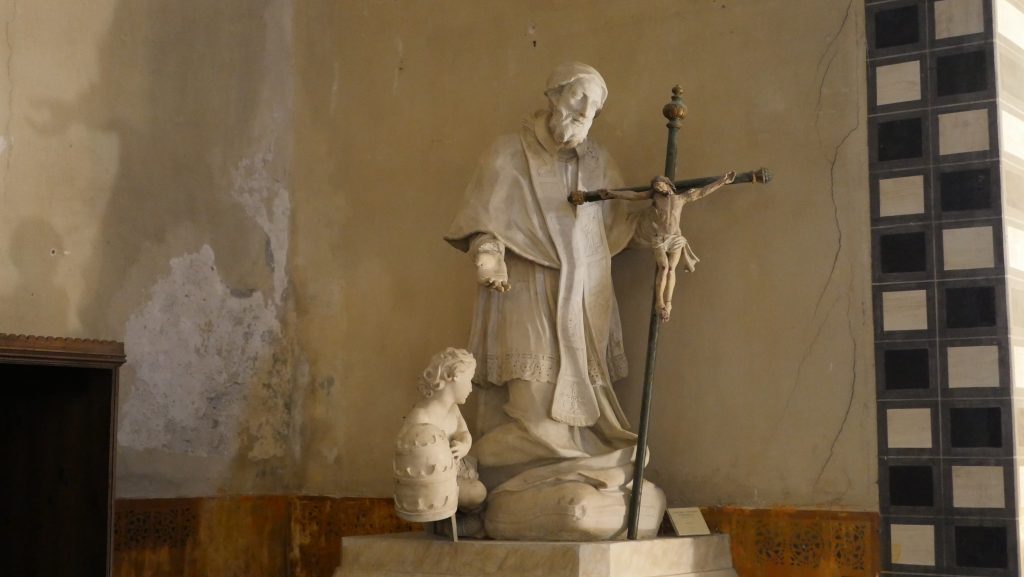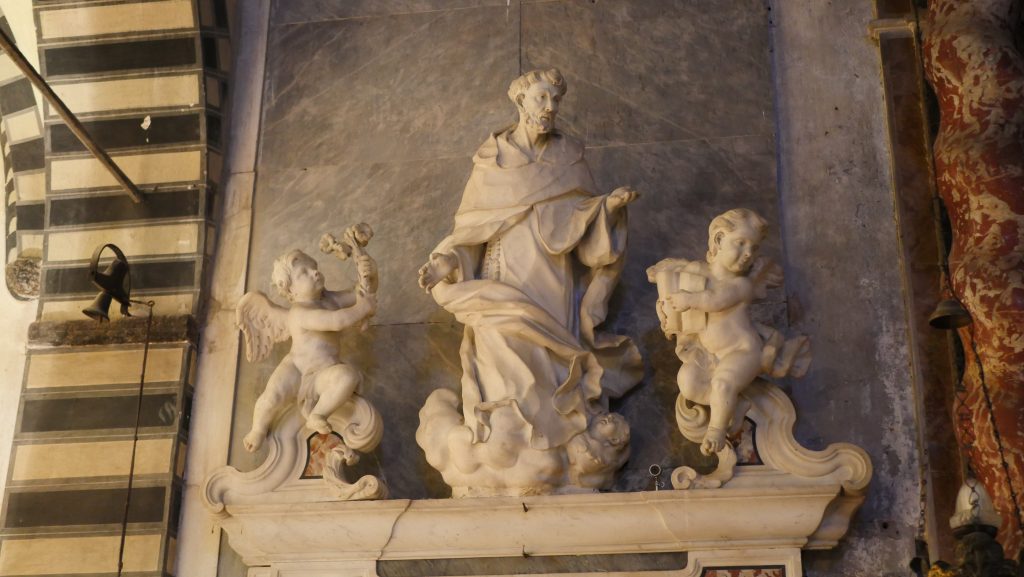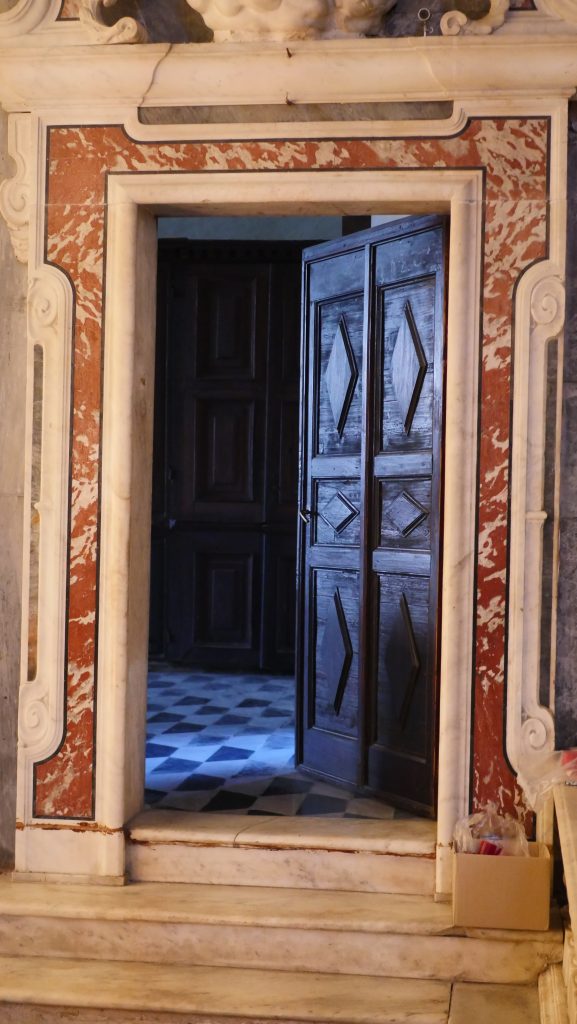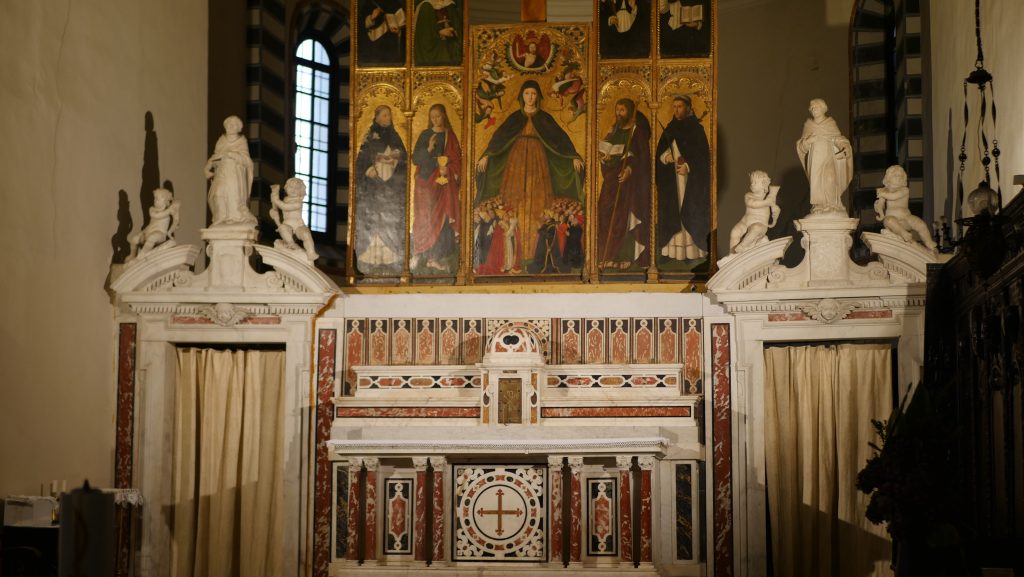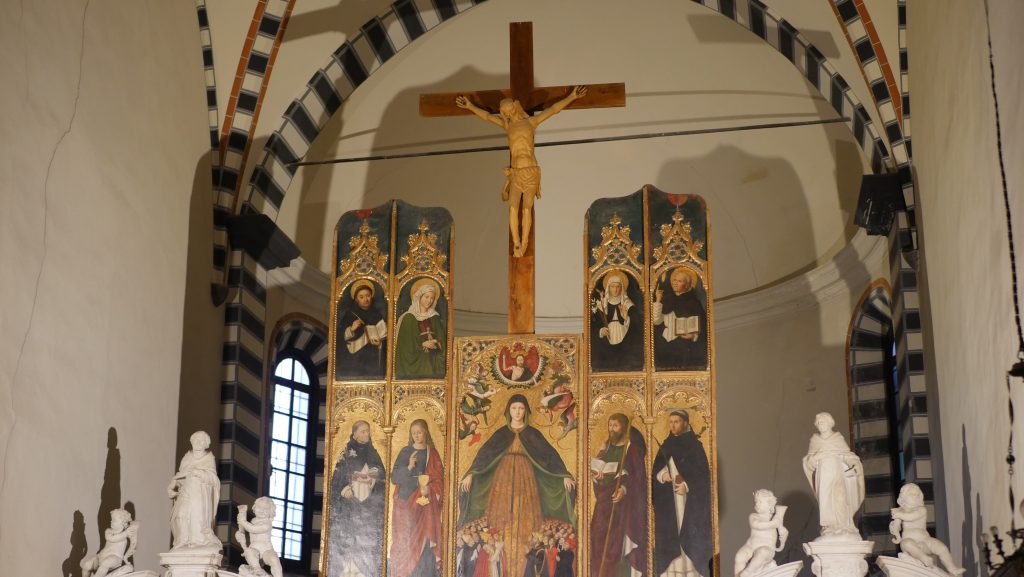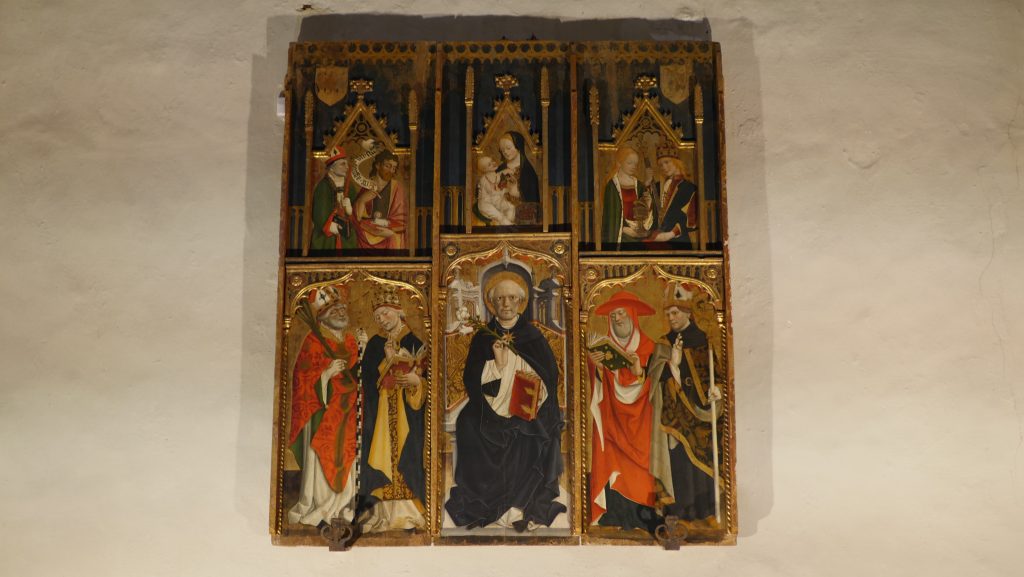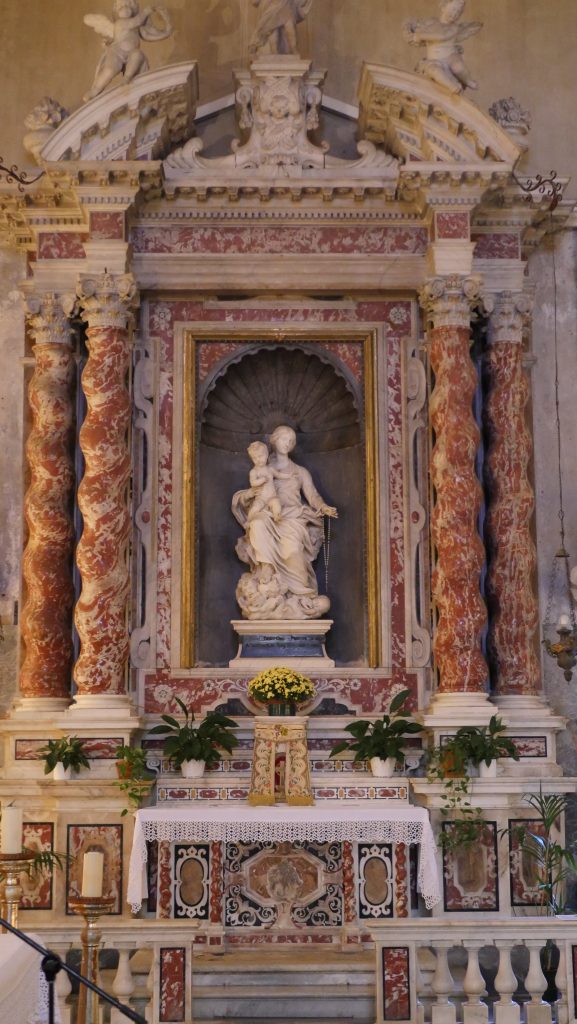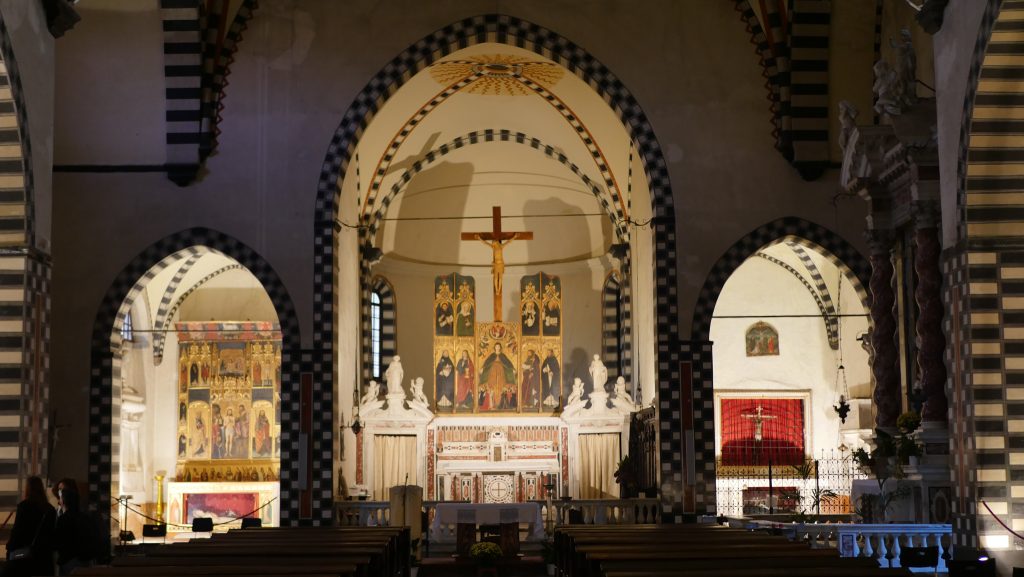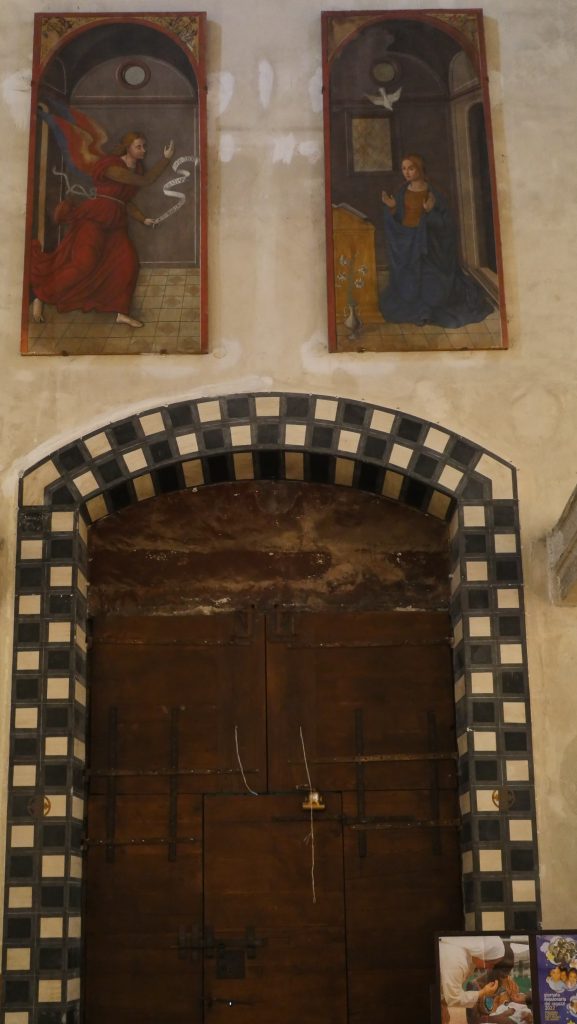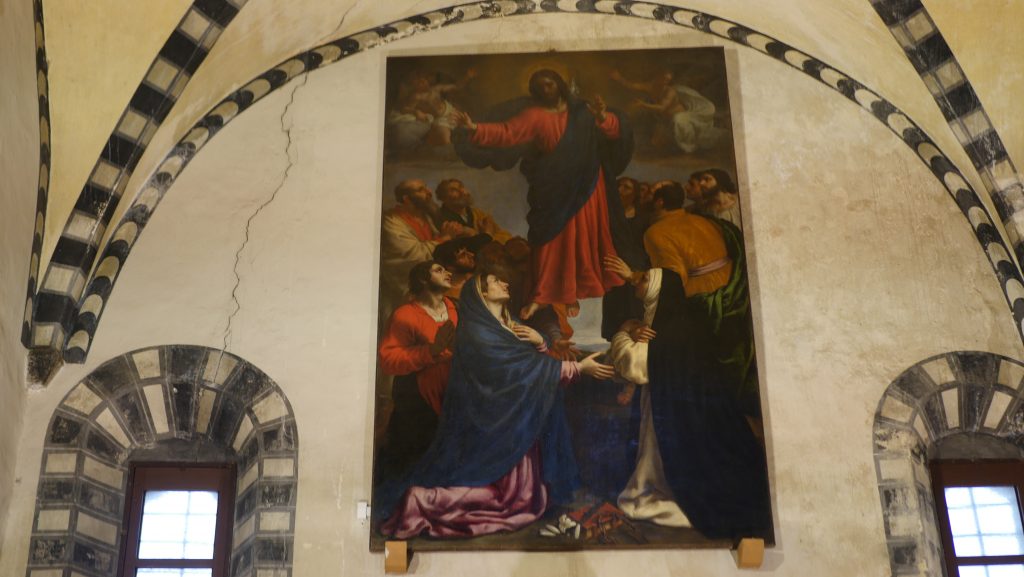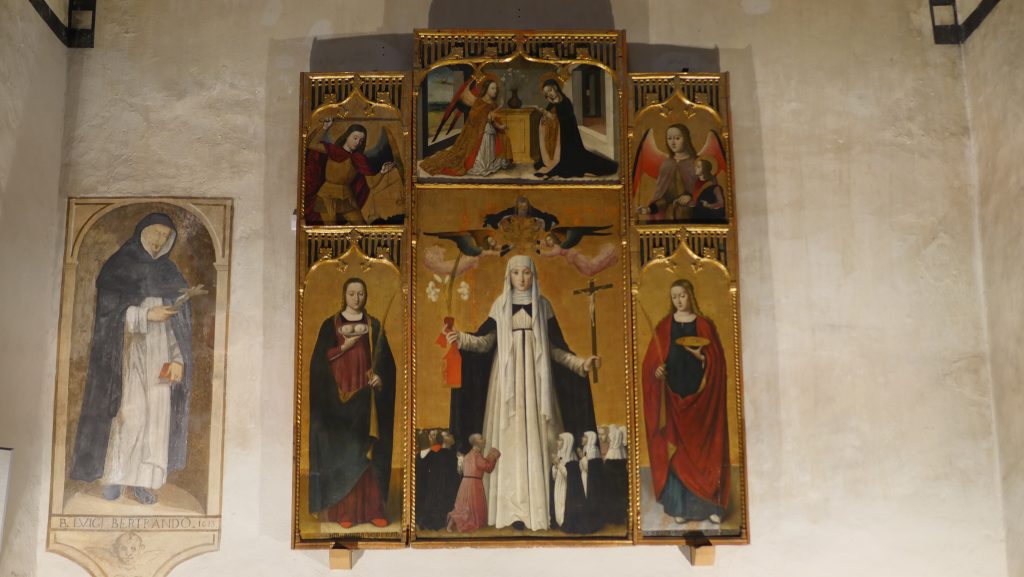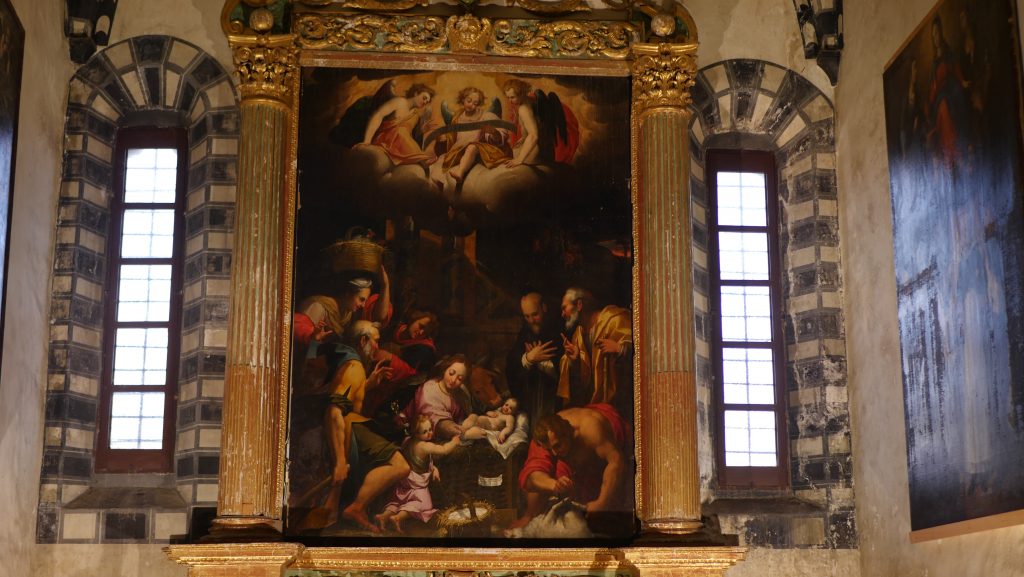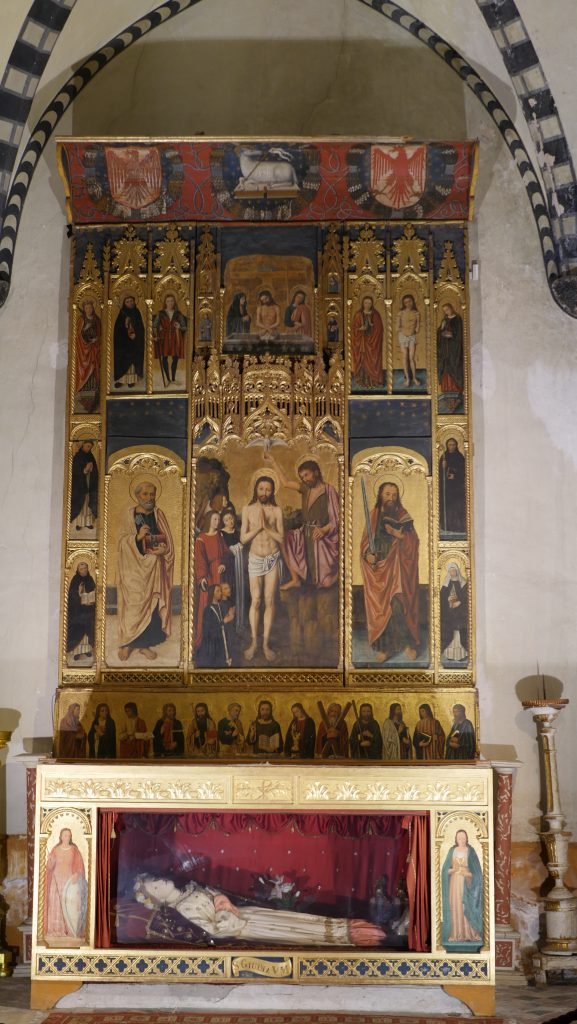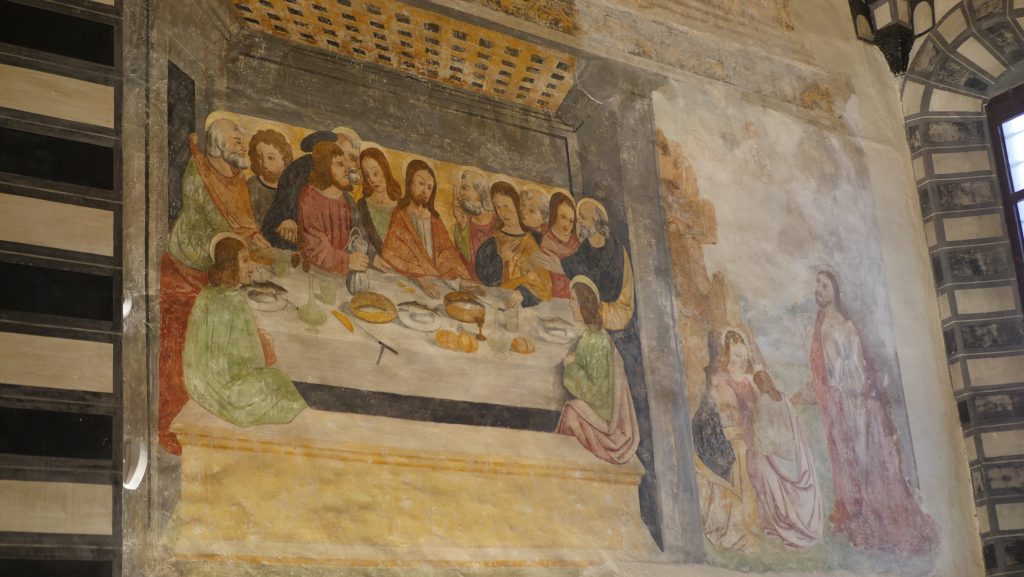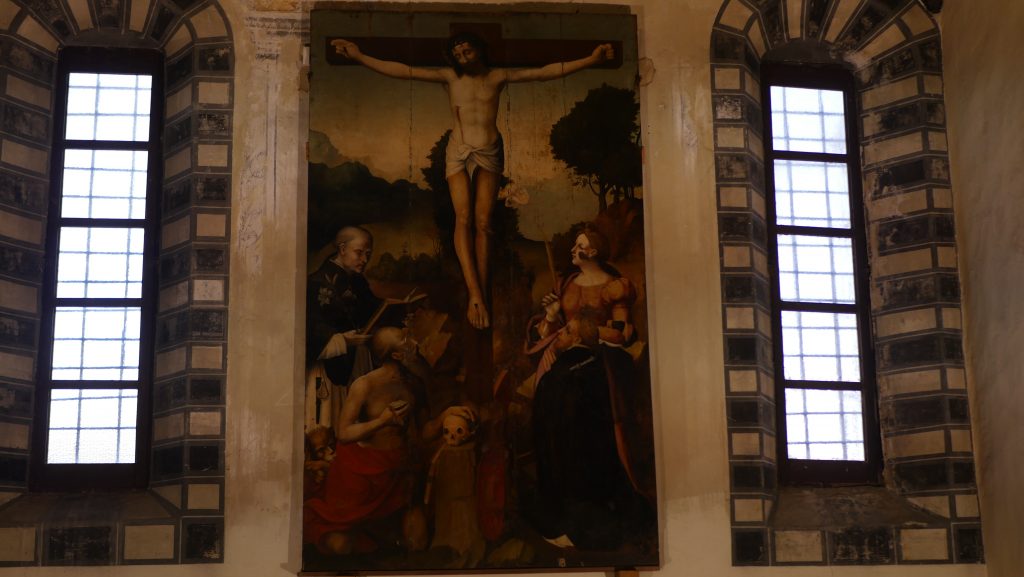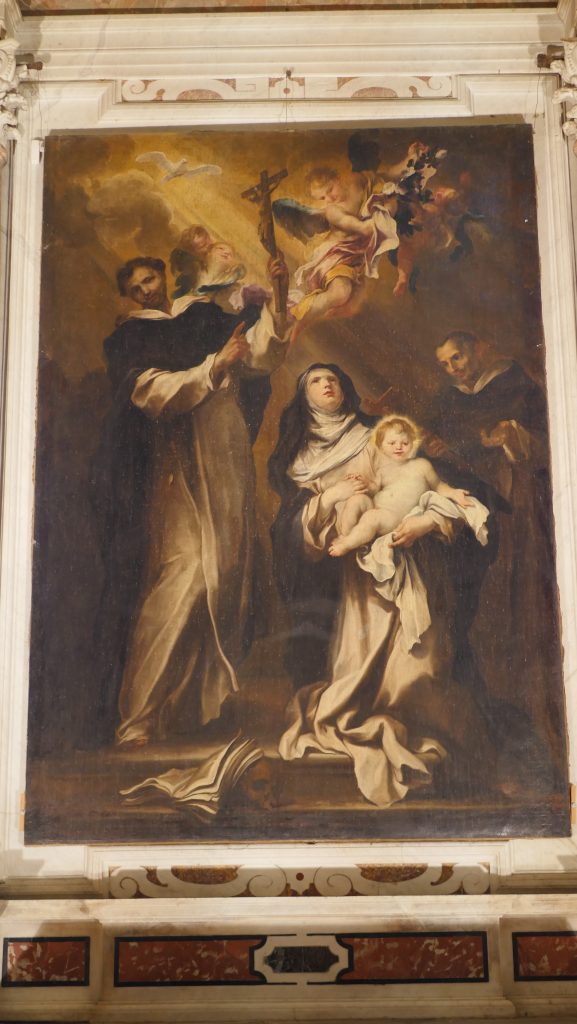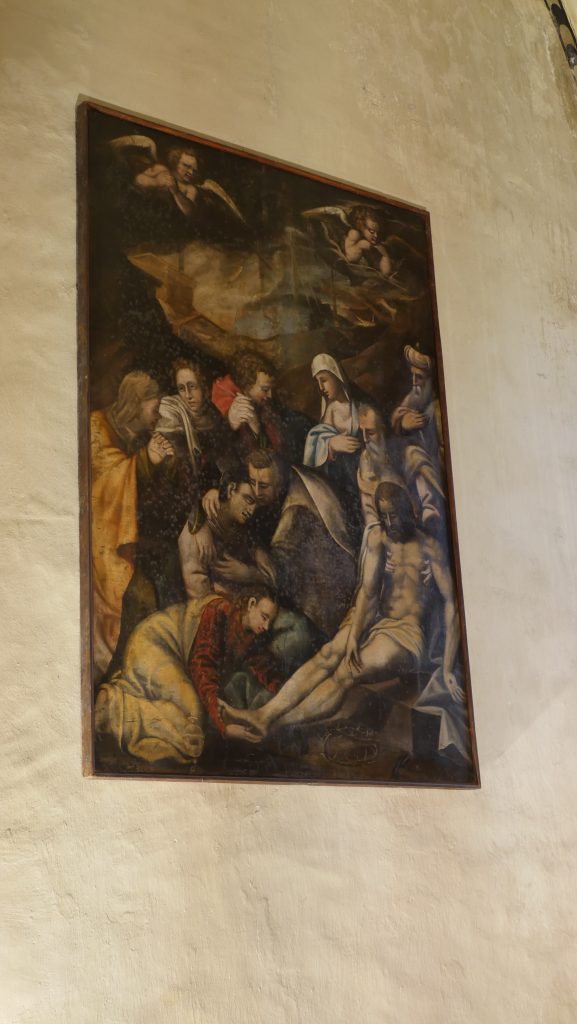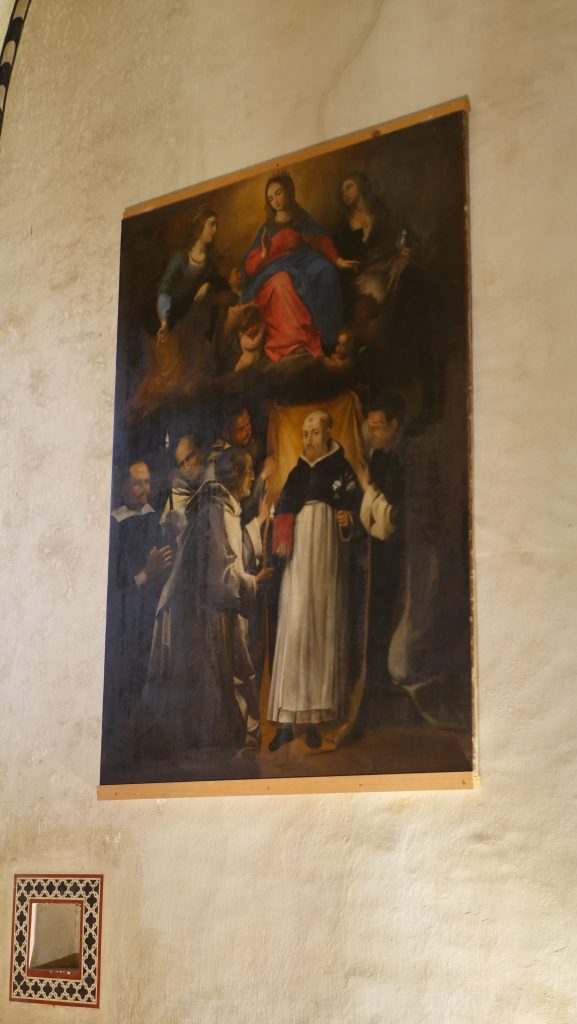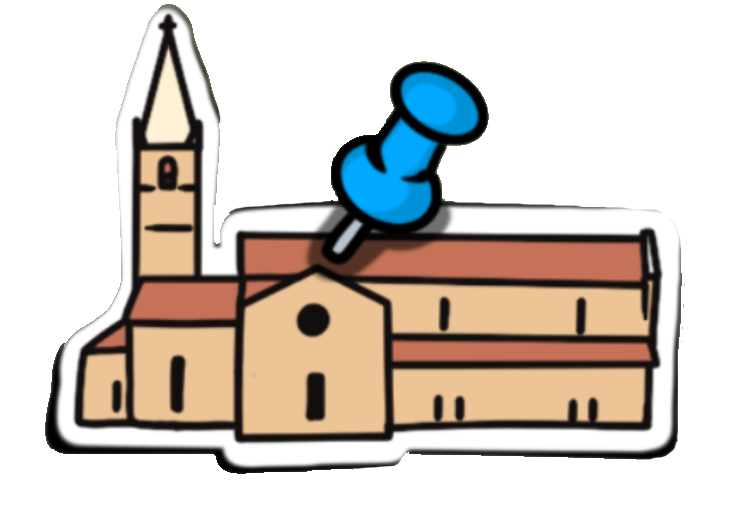
Convento di San Domenico
It’s the beginning of the 15th century, and there is a strong sense of religious involvement amongst the working class. Taggia in particular stands out for its associations, even though it remains without adequate conventual buildings.
The perfect opportunity to remedy that came with the arrival of Dominican Father, Cristoforo, from Milan in 1459.
Using his charm, he persuades the people from Taggia to start building a Dominican Convent, and, in doing so, filling the void of a monastic presence in the town.
The construction sees a team of Lombard wall masters work alongside local artisans, resulting in a collective effort. The wealthy provided loans, the people worked for free, and many neighbouring villages sent materials, wood, and slate.
The primitive access road to the convent was replaced with a new, straight path that linked San Domenico Square to the town. This new access road was called “Strada dei signori” (Gentlemen’s Road), as its creation was tied to the aristocratic families of Taggia.
The first stone was laid in 1460 thanks to the bishop Napoleoe Fieschi, but, in time, many events would change the destiny of this ecclesiastical building.
In 1564, Barbary, Algerian and Tunisian corsairs assaulted and ransacked the monastery. The friars took refuge in the village, abandoning the convent to the fury of the pirates. The following centuries saw a boom in the number of young people in Taggia and its surroundings being called to the faith and who wanted to become part of the Dominican community. In 1732, the increased number of books meant that a new library needed to be constructed.
After closing briefly during the Napoleonic period, the Convent was closed again in 1866 by the Italian Government to confiscate goods and support the State’s finances.
It was a long period of abandonment: the church stayed open to the cult, but the nearby buildings were transformed into a school and barracks. After a sixty-year absence, the Dominican Friars came back to Taggia in 1926 and started the arduous task of recovery promoted by Father Nicola Capoduro.
Thus, we can now still enjoy this artistic jewel in our Liguria, but most of all, it remains a centre of religious and cultural life, still visited by many people.
The cloister:
Entering inside the convent, we find ourselves in the cloister. A place where the Fathers rest, reflect, and a peaceful atmosphere reigns. In the cloister’s garden we can admire fruit trees, as well as a majestic olive tree of Spanish origins, that is almost 500 years old.
The cross vaults of the cloister have paintings in their lunettes representing the episodes of the life of Saint Domenic, some true, some legendary, but all of which are useful for preaching.
In the north-west corner, there is a well, which is fed by rainwater from a tank facing the cloister near the door of the refectory.
The church:
We continue by entering the church. In a Lombard-Gothic style, it was consecrated in 1490 by the bishop of Albenga, Leonardo Marchese. It is a single rectangular room, with four chapels on each side, a false transept and a presbyterium with two sepulchral chapels.
Initially, it was divided into three parts by low dividers that defined the choir area, the nearest part to the presbytery (reserved for men), and the back-most part, which was reserved for women.
On the inside of the church are preserved pieces from different artists among which Ludovico Brea and Francesco Mazzola, known as “Il parmigianino”.
Pieces are preserved inside the church from different artists, including Ludovico Brea and Francesco Mazzola, known as “Il Parmigianino”.
Ludovico Brea was born in Nice in 1450, and is one of the most important painters that embellished the church. As happens with every artist, the way he gave life to his art changed over time. We can admire this change through his works and see how he matured as an artist.
-altarpiece of S.Caterina da Siena (1488)
At the centre is the majestic Saint Catherine of Siena, between Saint Agatha and Saint Lucy.
We can see symbols, such as a cross, a lily, a book in a red bag and palms in the hands of the two saints – a symbol of martyrdom.
Even standing in front of two images that should express great violence, everything is stylised and the sentiment restrained.
In this piece, the great ability of the artist to dare a little at the time is evident. The majority of the piece is on a golden background, motionless in time and space. Meanwhile, in a small area in the upper side of the polyptych, Ludovico experiments with perspective – a skill that he will sharpen over time.
– La Madonna del Rosario 1512-1513:
This is without a doubt one of the greatest pieces in Liguria. The polyptych is no more – the panel only has a single subject.
The Virgin Mary sits on the throne with baby Jesus, between Saint Domenic, Saint Cecilia and angels playing musical instruments. At her feet and to the left are the members of the church with the Pope in front, and to the right, there are secular figures with the emperor.
Each character holds rosary beads in their hands. In fact, according to tradition, the invention of using repetition to aid memory can be attributed to Saint Domenic. The painting is very important stylistically speaking: the impact that coming into contact with the painter Vincenzo Foppa had, who led Brea into the Renaissance, is evident.
The use of perspective is notable, especially the floor beneath the throne and the nature in the background.
Parmigianino or Cambiaso? The Adoration of the Magi
This is probably the most important piece at the Convent, but, at the same time, one of the most mysterious. We’re not sure who the author is, nor how it arrived here.
Stolen in 1995 and found again in 2001, today it can be seen, however lacking its precious original carved frame.
It is a piece done in mannerist style, where the disorganisation and technical details lead us to think that this might be a work by Francesco Mazzola, known as “il Parmigianino”.
This piece depicts the biblical scene of the Adoration of the Magi: we can see the Virgin Mary holding baby Jesus in her arms, the Three Wise Men, and Saint Joseph.
Giovanni Canavesio:
Piedmontese painter and priest, very active in the Nice area and west Liguria between 1472 and 1500.
– -polyptych of Saint Domenic, the fathers of the church:
in this polyptych we can see Saint Domenic with Saint Ambrose, Saint Hieronymus, Saint Gregory and Saint Augustine.
Above: Saint Louis, the bishop of Tolosa; Saint John the Baptist; Saint Mary Magdalene; Saint Louis, king of France.
High up in the centre, the Virgin Mary offers some cherries to baby Jesus (symbol of the future passion of the Christ, as well as an homage to the local community, as cherries are a typical fruit from Taggia).
It is a very curated piece with regards to the drawing and colours, and is of a late gothic style, but still open to innovation in that it seeks three-dimensionality and a monumental appearance.
Sacristy:
We now move to the sacristy, passing through a door dominated by a low relief in slate.
It’s a very bright room with gothic decorations, closets, a marbled sink with putto faces, a Madonna of Mercy in slate, and a tondo with Saint Domenic. Then, there is an exquisite wood and slate cupboard, decorated by Ludovico Brea, overlooked by a Dead Christ in slate.
Sala Capitolare
We now enter into the sala del Capitolo (Chapter Room): a place where the friars would gather to pray, make important decision, or discuss theological matters.
In this room, we find a painting by Canavesio, “Crocifissione e Santi” (Crucifixion and Saints) from 1482. The painting has been ruined over time from when the convent was a military barracks, due to the opening of two windows.
Museum:
The following room is now the Convent’s museum. Used in the past as a dormitory for lay brothers, it’s now both the winter church and museum.
Refectory:
Last but not least, the refectory is a big room where, near the kitchen, the lay brothers would eat, and farther away, in the back towards the fresco painting, the friars would eat.
Once again, we can admire a wonderful painting by Giovanni Canavesio: “Crocifissione con San Domenico” (Crucifixion with Saint Domenic) from 1482. It is a harsh and dramatic painting.
Within the big Dominican Fathers emblem on the vault of the refectory, there is a dog with a torch in its mouth, crouched on a book and the world, under the word “veritas” (truth).
The play on words of “Dominicans” as a derivation of “domini canes” (literally dogs of God) is curious: the Dominican Friars are, in fact, like sheep dogs, that shine their light on, and protect God’s herd.
Photos
Video






